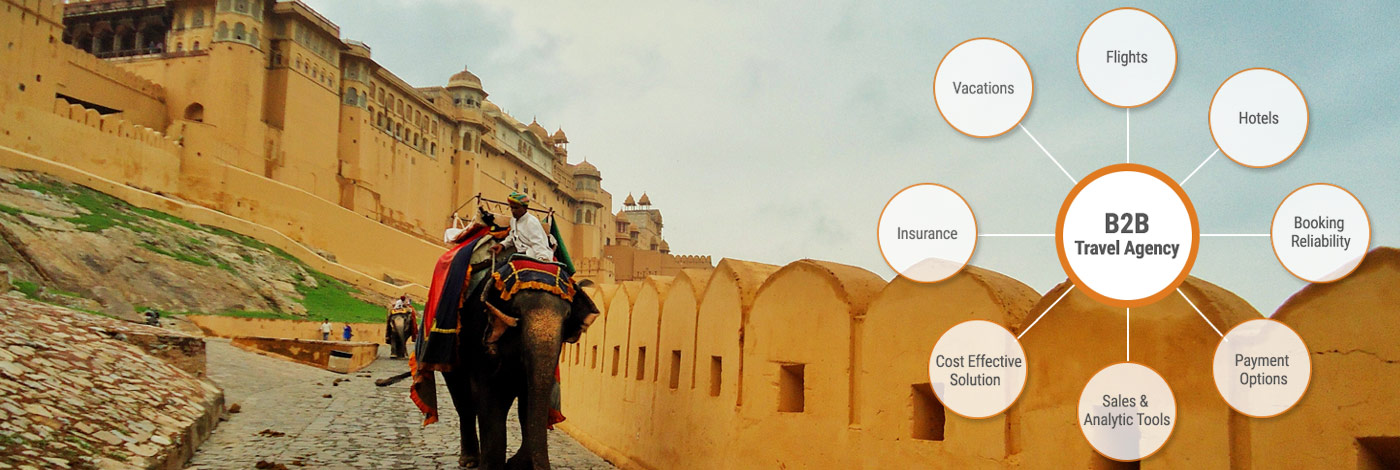Pushkar B2B
In the Indian state of Rajasthan, Pushkar is a town in the Ajmer District. It is situated 14 km (8.7 mi) northwest of Ajmer at an average altitude of 510 m (1,670 ft) and is one of the Devout Hindus' Five Holiest Dhams (Pilgrimage Site). The Pond at the Katas Raj Temple near Choa Saidan Shah in the Chakwal District of Pakistan has a legendary connection with Lord Shiva, according to Hindu mythology, It was created by Lord Shiva 's tears, which he claims he shed after his wife's death, Satti. The storey goes that Lord Shiva cried so much and for so long when Satti died, that his tears formed two holy ponds — one at Pushkara in Ajmer in India and the other at Ketaksha, which literally means raining eyes, in Sanskrit. The Word Katas Is Derived From This Name. It is also called "Tirth Raj"-The King Of Pilgrimage Sites-and has become a popular destination for international tourists in recent years.
Pushkar is one of India's oldest cities. It lies on Pushkar Lake 's shore. It is not known the date of its actual origin, but legend associates Lord Brahma with its creation. Pushkar has several temples. Most of the temples are not very old since many temples were demolished in the region during Muslim conquests. The destroyed temples were subsequently rebuilt. The Brahma Temple, founded during the 14th Century CE, is the most prominent of all. There are very few temples to Lord Brahma anywhere in the world. Other Brahma Temples include Bithoor in Uttar Pradesh , India, Asotra Village Near Balotra Barmer District City In Rajasthan, Uttamar Kovil (One Of The Divya Desams) Near Srirangam, Tamil Nadu, Besakih Mother Temple In Bali, Indonesia, And In Yogyakarta, Indonesia, Prambanan. There are 52 Ghats in Pushkar Lake where pilgrims go down to the lake to bathe in the Holy Waters.
Places to visit in Pushkar
Pushkar Lake:According to Hindu scriptures, the sacred Pushkar Lake is described as ‘Tirtha Raj’, the king of all pilgrimage sites. No pilgrimage is considered to be complete without a dip in in the holy Pushkar Lake. Semi-circular in shape and about 8-10 metres deep, Pushkar Lake is surrounded by 52 bathing ghats and over 400 temples and is truly a magnificent sight to behold.
Brahma Temple: Nestled in the picturesque Pushkar valley beyond the Nangaparvat and Anasagar Lake, the Brahma temple holds a special place in the hearts of Indians. It is the only temple in the world dedicated to Lord Brahma. Built with marble and decorated with silver coins, this temple can be identified by its red spire and the image of a swan (considered sacred to Lord Brahma). The chaturmukhi (four faced) idol of Lord Brahma is housed in the inner sanctum. A marble statue of the sun god stands sentinel at the temple. Interestingly, while all the gods are shown bare footed, Surya is shown wearing ancient warrior’s boots.
Old Rangji Temple: The gracious and conspicuous Rangji Temple is another popular shrine that witnesses thousands of pilgrims and tourists every year. The temple is dedicated to Lord Rangji, believed to be an incarnation of Lord Vishnu. The influence of South Indian style, Rajput style and Mughal style in the temple’s architecture is highly noticeable. The high-rising ‘Gopuram’, prevalent mainly in the temples present in South India is another feature of the temple that attracts visitors.
Atmateshwar Temple: This beautiful 12th century temple is dedicated to Lord Shiva and has an underground component. The intricate Hemadpanti architectural style carvings give this temple a magnificent appearance. Thousands of devotees flock here to pay their respects during the auspicious time of Shivaratri, when Lord Shiva is ritually respected.
Savitri Temple: Dedicated to Lord Brahma’s first wife, Goddess Savitri, this temple is situated on a hillock right behind the Brahma temple. While climbing the long series of steps leading to the temple, one can catch a panoramic view of the lake, surrounding temples and sand dunes. The presence of the only Brahma Temple in Pushkar is the outcome of Savitri’s curse to Brahma for marrying another Goddess, Gayatri, while starting his yagna in Pushkar..
Gurudwara Singh Sabha: situated in the eastern part of Pushkar, was built in the beginning of the 19th century to commemorate the visits of the first and the tenth gurus- Guru Nanak Dev and Guru Govind Singhji.
Rose Garden: You can also pay Rose Garden a visit when in Pushkar, as it is here where farmers grow a variety of roses extensively. The sight of blooming flowers and the soothing fragrance of it would simply leave you feeling happy and at peace.
How to Reach Pushkar
By Air: The nearest airport is Jaipur (145 km), from where one can take flights for Delhi and Mumbai.
By Rail: Ajmer is the nearest railway station from where one can take trains for the major destinations in Rajasthan and other parts of India.
By Road: Pushkar is connected to Ajmer by road. Buses, jeeps and taxis are also available.


